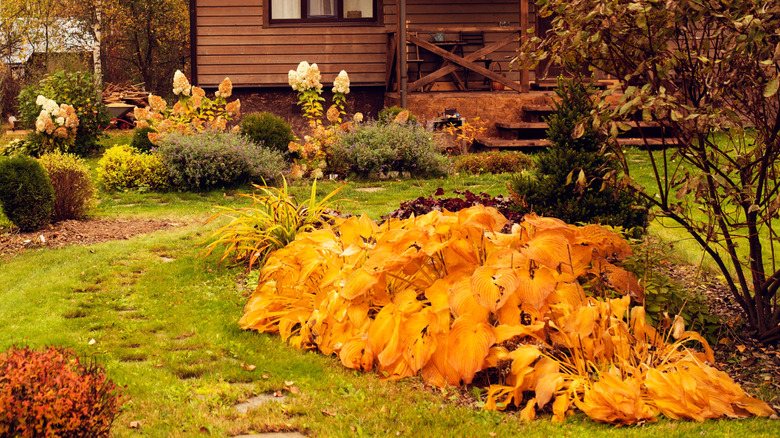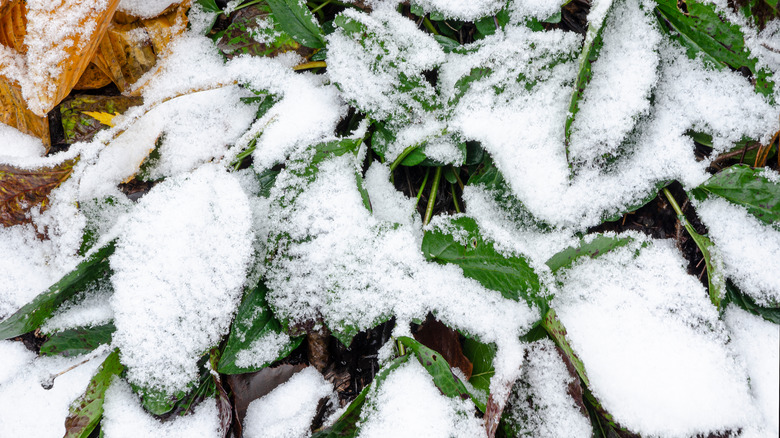Essential Fall Tasks To Keep Hostas Healthy Before Cold Weather Rolls In
We may receive a commission on purchases made from links.
Hostas are versatile herbaceous perennials that count themselves among the most no-fuss plants that need shade, so sometimes they seem invincible. But even though many of these hardy plants survive winters down to USDA Plant Hardiness Zone 3, they can always use a little boost from you to be at their healthiest when cold weather hits. Cutting away dead leaves, defending the plant from pests, and laying down a warming layer of mulch now might help hostas thrive next spring.
Hostas brighten any garden with their broad, greenish-yellow leaves and their spike of flowers that can range from white to purple with a few shades in between. Hostas hibernate in the winter. Sometimes they even look dead, but they're just sleeping. If you want fuller, healthier hostas for the next spring, then be proactive and trim back dead leaves in the fall. Trimming hostas, especially in regions where winters are less harsh, is a good way to help decrease the number of slugs and other parasites in your garden because it gives them less cover over the winter.
While you're trimming off dead leaves, pay careful attention to any diseased leaves. Fall is the time to not only fight pests but fungal infections as well. Anthracnose can be especially common for hostas in mild areas with lots of rain. You'll know this leaf disease by its telltale brown spots that often leave foliage looking ragged. Brown streaks on leaves, however, can also be caused by nematodes, a type of roundworm. Fun facts about nematodes: They're microscopic and live in the leaves of the infected hosta. You can eliminate them in the fall by getting rid of damaged leaves.
How to keep your hostas healthy in winter
While you're defending your hosta from microscopic pests, don't forget the big ones in your garden. Rabbits, deer, and even voles often graze on hostas. One way to discourage voles or even slugs from snacking on your hostas is to remove wet, soggy leaves. Voles love to use hosta leaves as cover while they burrow holes and devour hosta roots. Deer can be as bad or worse than voles. If you want to know how to keep deer away from hostas, then you can try some homemade repellents made with garlic or store-bought ones like Liquid Fence deer and rabbit repellent. A good old-fashioned barrier like a fence works great, too.
When you've properly protected your hostas from garden invaders, then it's time to think about laying down a blanket of mulch near them for the winter. Mulch can help the hostas survive the fluctuating temperatures of winter, especially if these hostas are newly planted or divided. Straw will also work well here. Of course, come spring, be sure to remove mulch from near hosta crowns so that they get good air circulation for proper growth. In the fall, water hostas regularly, but know that after frost settles in, the ground may be too frozen for water to reach the roots.
With these precautions, your hostas should bounce right back in the spring. If they don't, then underground pests like voles might be to blame. Look for signs of the small animals near your plants to find out, such as tunnels and chewing.

